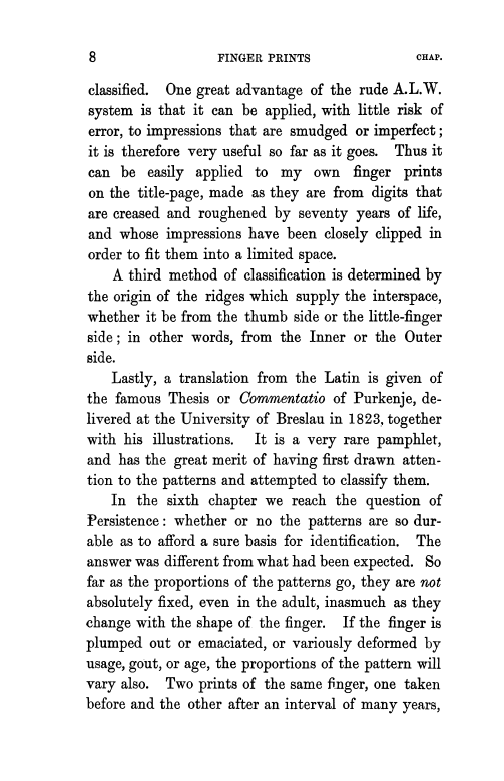| ||||||

OCR Rendition - approximate
$ FINGER PRINTS CHAP. classified. One great advantage of the rude A.L.W. system is that it can be applied, with little risk of error, to impressions that are smudged or imperfect ; it is therefore very useful so far as it goes. Thus it can be easily applied to my own finger prints on the title-page, made as they are from digits that are creased and roughened by seventy years of life, and whose impressions have been closely clipped in order to fit them into a limited space. A third method of classification is determined by the origin of the ridges which supply the interspace, whether it be from the thumb side or the little-finger side ; in other words, from the Inner or the Outer side. Lastly, a translation from the Latin is given of the famous Thesis or Commentatio of Purkenj e, delivered at the University of Breslau in 1823, together with his illustrations. It is a very rare pamphlet, and has the great merit of having first drawn attention to the patterns and attempted to classify them. In the sixth chapter we reach the question of Persistence : whether or no the patterns are so durable as to afford a sure basis for identification. The answer was different from what had been expected. So far as the proportions of the patterns go, they are not absolutely fixed, even in the adult, inasmuch as they change with the shape of the finger. If the finger is plumped out or emaciated, or variously deformed by usage, gout, or age, the proportions of the pattern will vary also. Two prints of the same finger, one taken before and the other after an interval of many years,
|